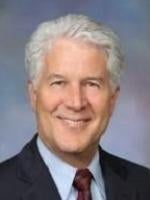Much has been written in recent years about the escalating talent shortage in the healthcare industry. According to a recent survey, the talent shortage is among the top issues for more than 90 percent of U.S. hospital executives (Economist Intelligence Unit), The Association of American Medical Colleges forecasts a gap of between 40,000 and 105,000 physicians over the next 12 years, and nearly half of today’s registered nurses will reach retirement age within 2 years . The Bureau of Labor Statistics projects that 1.1 million additional nurses are needed to avoid further shortages. Much less has been written, however, on how to address the problem. Suggestions for employers include increasing pay and benefits, paying off student loans, enhancing work-life balance programs, providing more flextime, and other obvious incentives to attract qualified candidates.
What is often overlooked is the diversity factor. The U.S. has been undergoing a dramatic demographic shift over the past few decades. In addition to the aging population, racial and ethnic minorities have been inexorably growing as a percentage of the domestic population and workforce. By 2042, it is estimated that there will be no majority race/ethnic group. Is the healthcare industry capitalizing on this changing talent pool?
To the contrary, healthcare appears to be lagging behind in the diversity of its workforce. African Americans are currently about 13 percent of the U.S. population and workforce, and Hispanics, about 18 percent. But, as the U.S. Equal Employment Opportunity Commission reports, in U.S hospitals, African Americans comprise only 4.2 percent of executives, 8.1 percent of mid-level officials and managers, and 7.9 percent of professionals (for Hispanics, 3.1 percent, 6.0 percent, and 5.4 percent, respectively) (see chart, below). Many hospitals are located in urban areas rich in minority populations—e.g., African American population of Atlanta, 52 percent; Washington, D.C., 47 percent; Chicago 31 percent; New York, 24 percent; and Miami, 18 percent—all above the national percentage. Similarly, Miami’s Hispanic population is 69 percent, Los Angeles is 49 percent, and Chicago is 29 percent. While the statistics are not as reliable for the percent of these populations that are qualified for specific medical-related positions, it is clear that there is untapped talent that can be accessed to address the shortages.

How to attract this diverse talent? Here are a few suggestions to get you started:
- Create a Diversity and Inclusion (D&I) Strategic Plan that provides goals, responsibilities/accountabilities, and timetables for achieving milestones. Secure buy-in and visible support from the CEO and Executive Committee.
- Identify a corporate executive—such as a Chief D&I Officer—with responsibilities for design and execution of the Plan. Create a Diversity Council to provide guidance and support.
- Provide adequate budget and resources to the D&I Office to secure results.
- Use data analytics to identify the most significant gaps between incumbency and availability of diverse employees, and set targets for reducing the gaps. (If you are a Federal employer, you likely already prepare Affirmative Action Plans identifying such gaps.)
- Hold executives and managers accountable for D&I performance. Include D&I objectives in performance requirements and evaluations.
- Create Employee Resource Groups where identifiable groups, such as African Americans, Hispanics, Asians, older workers, employees with disabilities, LGBT, etc., can assist you in both outreaching to qualified candidates (“fishing in the right pond”), and enhancing corporate culture to welcome a more diverse workforce.
- Engage recruiters—internal and external—specializing in finding qualified diverse candidates, and regularly assess their performance at achieving your objectives.
- Talk to your workforce. Use individual interviews, focus groups, employee engagement surveys, and exit interviews to learn ways to improve the welcoming culture.
- Communicate your D&I message to the workforce and the public. Millennial candidates, among others, often look first at your website (as well as social media) to determine your workforce profile and culture.
- Conduct adverse impact analyses of your key employment functions (applicant flow rates; hiring; promotions; discipline; voluntary and involuntary terminations) and address any statistically significant impacts on identifiable groups.
Diversity programs can raise legal issues depending on how they are established and administered, so be sure you check with counsel regarding any specific initiative.
With a strong commitment to tapping diverse talent, hospitals and other healthcare providers should make progress in reducing the escalating shortage and continuing to provide first-rate healthcare to patients across the country.




 />i
/>i

